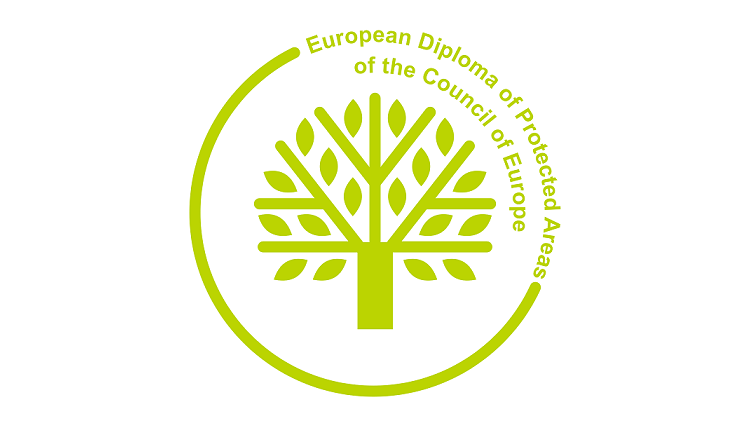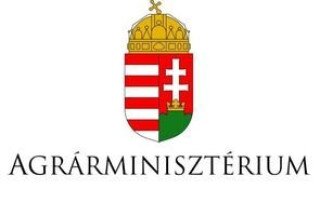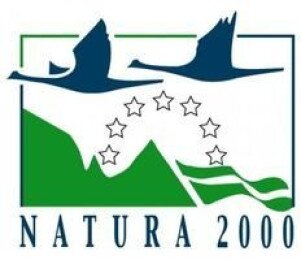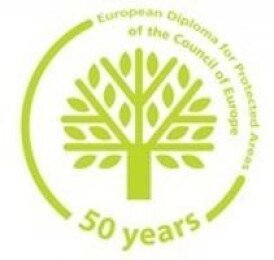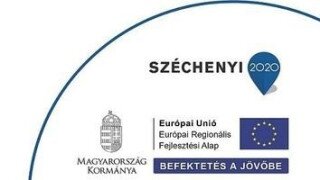What is the European Diploma?
In order to protect the natural heritage of Europe, the Council of Europe instituted the European Diploma in 1965. With the award, protected areas of outstanding geological, biological or landscape diversity are placed under the auspices of the Council of Europe. The Diploma also acknowledges the effectiveness of the conservation of the area.
Who have been awarded the Diploma?
The distinguished areas are highly diverse in terms of their size and their habitat types. For example:
The Krimml waterfall in Austria;
The peat bogs of the Wurzacher Ried Nature Reserve in Germany;
The huge national parks of Sarek and Padjelanta in Sweden;
The virgin forest of Bialowieza National Park in Poland;
The Montecristo Island Nature Reserve in Italy;
The wetlands of the Dońana National Park in Spain;
The Alpine landscapes of the Ecrins National Park in Spain;
In Hungary, the Szénás Hills strictly protected area and the Ipolytarnóc Paleontological Site protected area received the Diploma in 1995, while the Volcanic Formations of Tihany in 2003.
The dedication and review of the Diploma
Applications for the Diploma are sent to the Council of Europe by the governments of the Member States. The decision is made by the Committee of Ministers, based on an on-site evaluation of an expert team. The manager of the area must document the fulfilment of the recommendations which normally accompany the award. The renewal of the Diploma, which is due every five years, is preceded by another site visit. The Diploma can also be withdrawn, if necessary, as it has already happened in the past. Protecting the prestige that comes with the Diploma lays a great responsibility on the manager of the area.
Postvolcanic Phenomena of the Tihany Peninsula
The Tihany Peninsula was declared the first landscape protection area of Hungary in 1952. In 1997 it became part of the Balaton-felvidéki National Park, with an exceptional touristic importance. The area features wetland habitats, like the strictly protected Külső-tó (Outer Lake), in the immediate vicinity of dry and hot habitats of Submediterranean character. The diverse plant communities are home to rare species such as Gagea bohemica, a showy flower of the rocky outcrops, or Pomatias elegans, a snail.
Its floristic and faunistic values notwithstanding, the international recognition of Tihany is mostly due to its peculiar geological history and its geological and geomorphological features. The weathering of the basaltic rock (a mixture of volcanic ash and debris) deposited by volcanoes that were active in the area a seven million years ago created a variety of rock formations, exemplified by the formation called Szélmarta-sziklák (Weathered Rocks). The biggest attractions, however, are the geyser cones, which are unique in Europe. The mineral-laden hot springs, emerging during post-volcanic activities, deposited their dissolved calcium, silica and dolomite contents, forming a rock called geysirite. There are over one hundred such cones of different shapes and internal structures, located mostly in the western part of the peninsula.
The Balaton-felvidéki National Park Directorate mobilises considerable resources for the research, protection and presentation of the geyserite hot spring cones. The Lóczy Nature Trail connects the most interesting natural and cultural attractions of Tihany, among them a dozen or so geyserite hot spring cones. The orientation of visitors is facilitated by information boards, the trail can be visited freely and guided hikes can be ordered.
Contact: Balaton-felvidéki National Park Directorate
Address: 8229 Csopak, Kossuth u. 16. | Vers Réka
Phone: +36 30 382-7243 | E-mail: tihanyierdeiiskola (@) bfnp (.) hu
Reference: HUNKELER, P. (2000): European Diploma for protected areas. Questions and Answers 6. - Council of Europe, Strassbourg.

